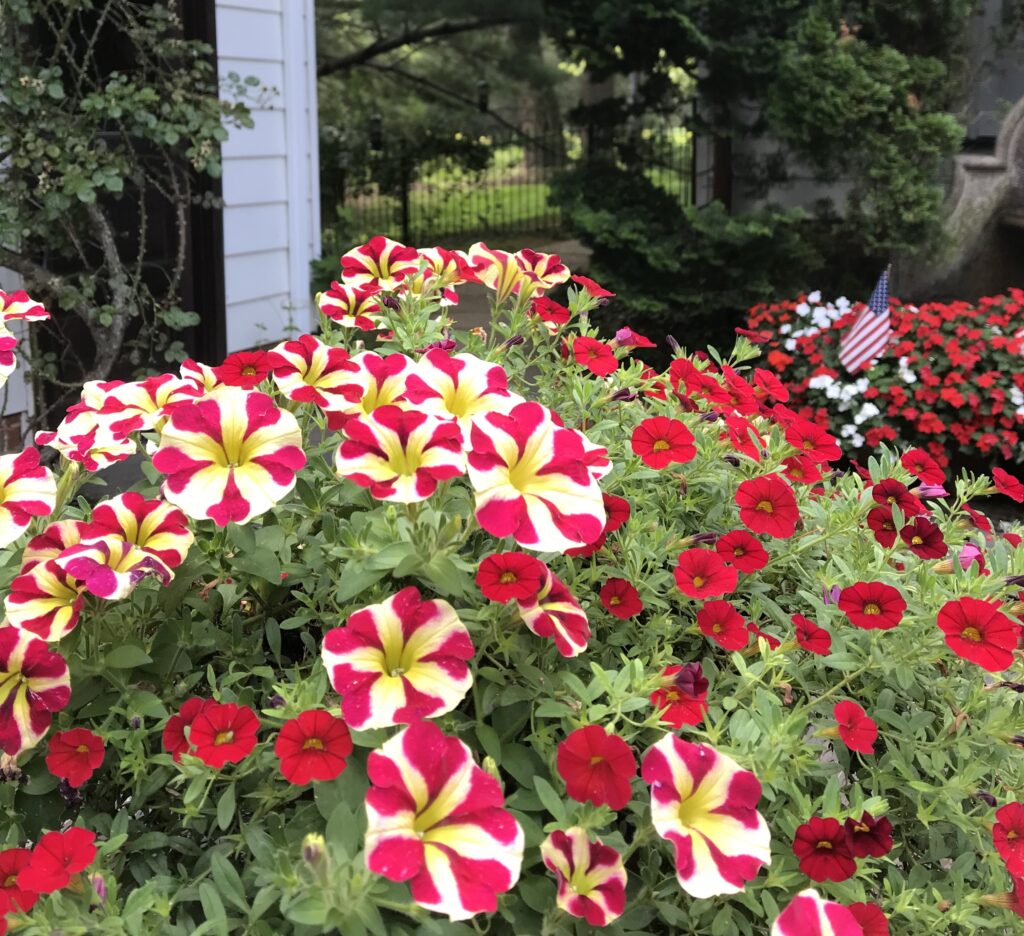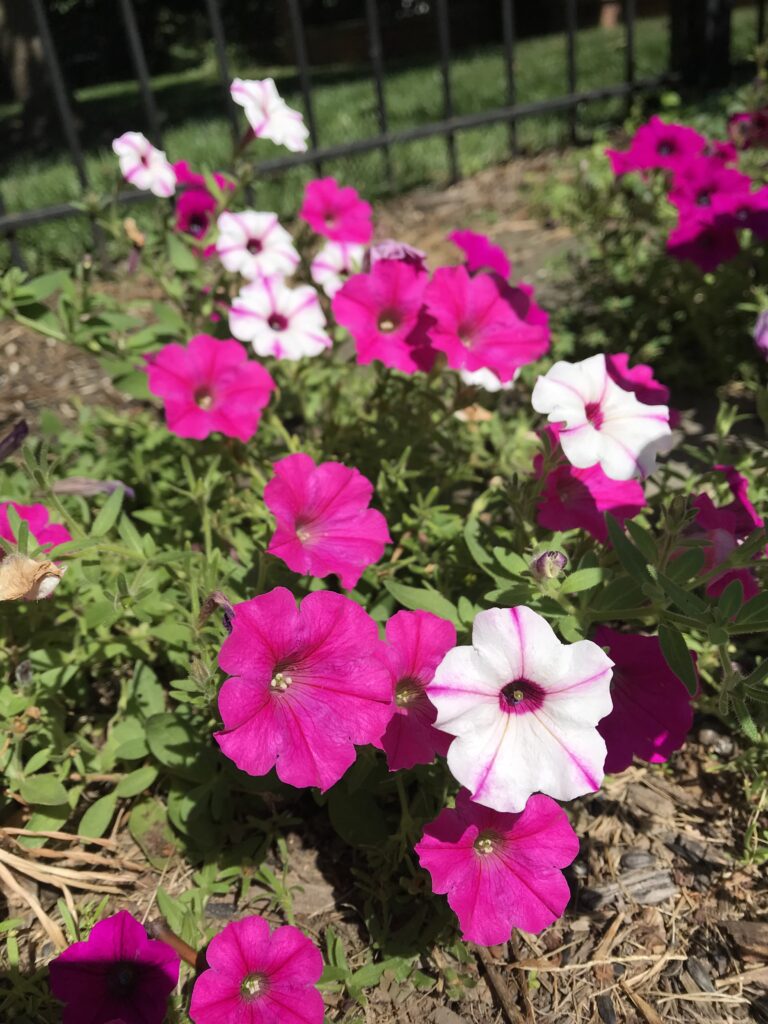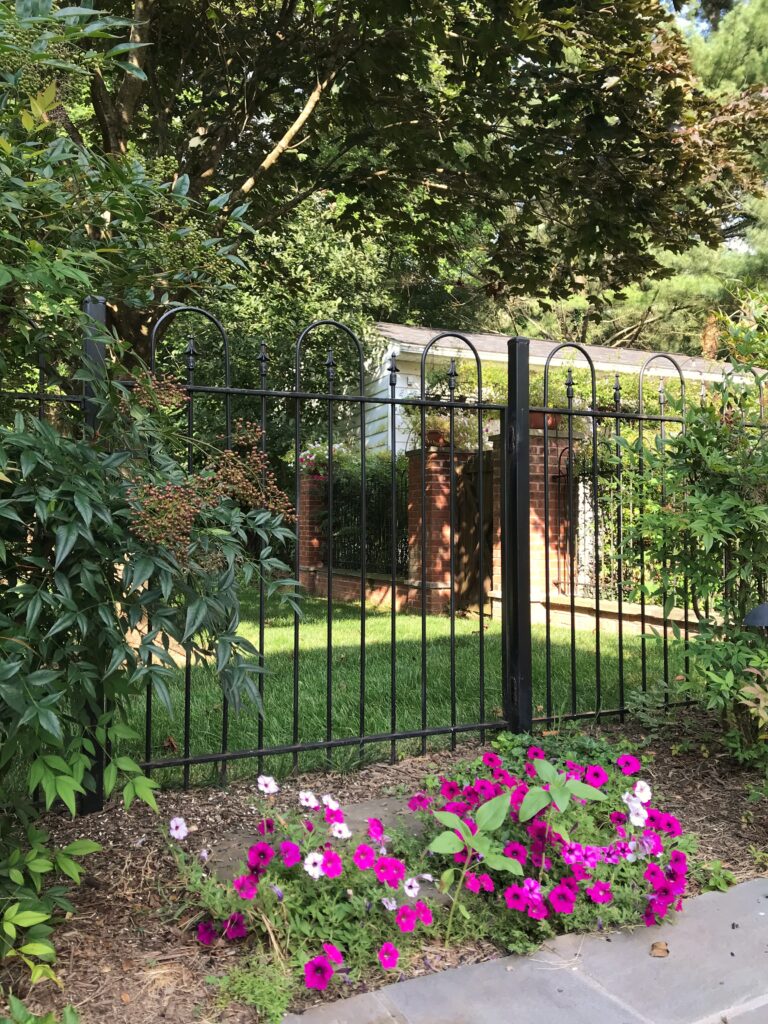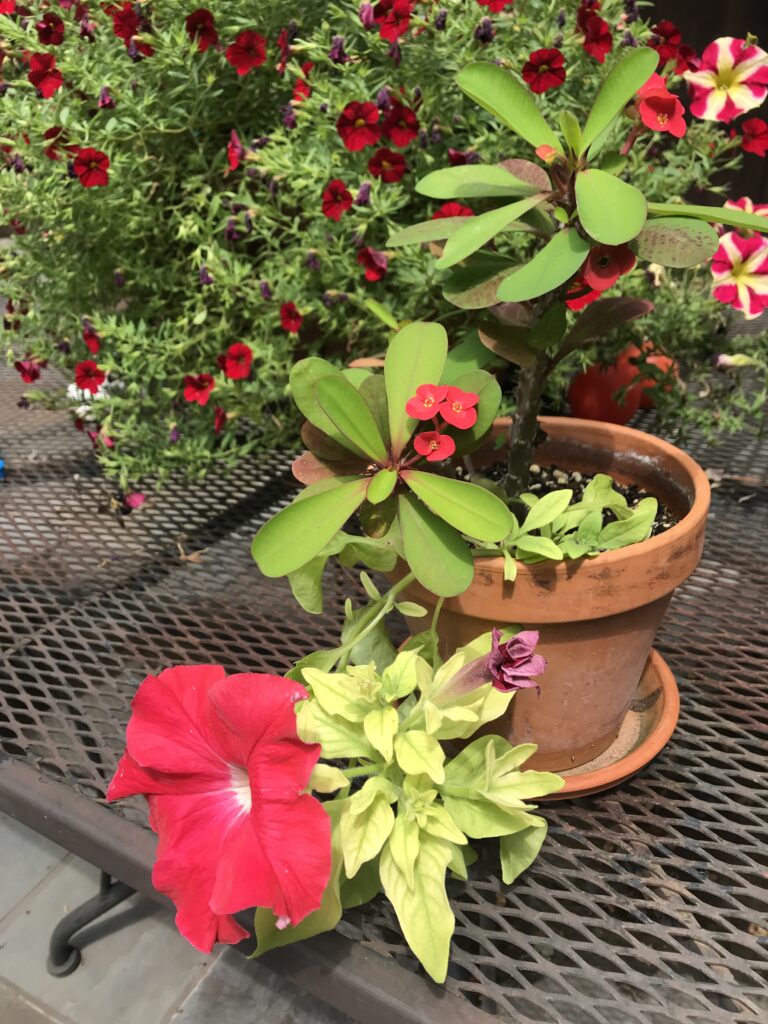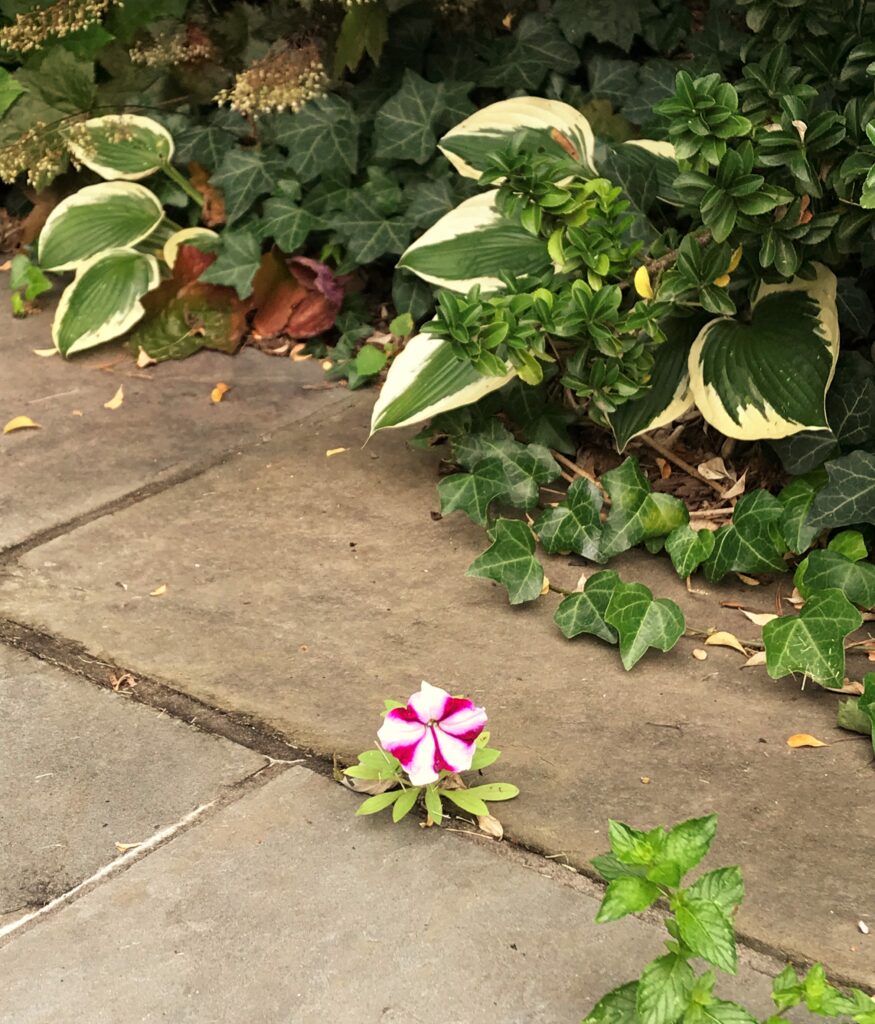In my last post, I wrote about the industrious squirrels that have planted a lovely crop of sunflowers in our back yard. Unfortunately, most of the other plants that pop up, unbidden, untouched by human hands, are not as welcome. As the typical suburbanite knows, a dizzying number and variety of weeds grow smarter and more determined with every passing year. My husband, for example, is currently waging war against his leggy green nemesis, stiltgrass, which seeks to take over the lawn.
But there is one self-seeding flower that I’m always happy to see: the petunia.
I’ve known a few rather snooty gardeners who look down their noses at the petunia. They consider the flower to be too compliant, and therefore expected and ordinary. I’ve never felt that way. In the deep shade of old oaks and tulip poplars surrounding my childhood home in Atlanta, no sun-loving flowers ever lasted long. We tried repeatedly, but without success. I was elated to be able to grow mounds of bright, hearty petunias here in Virginia, on and around our sun-drenched back patio. They’re perfect in the big pots atop the brick pillars along the fence line. They bloom quickly and continuously, well into the fall, needing only light and fairly regular watering. I especially love this Queen of Hearts variety, above. With its red hearts separated by yellow ribbons, it pairs beautifully with a smaller red variety.
The petunias have been busy this season. They tend to choose appropriate and charming spots for self-planting. Last year I’d positioned a large clay bowl of the flowers atop the stepping stone by a gate. I used it for other plants this year, in a different location. But by June, petunias began sprouting up around the stone, never mind the thin, mulched soil. The seeds from the previous year’s spent flowers simply plant themselves, I’ve learned. And now, without any planning or care on my part, they’re flourishing.
And yes, the squirrels planted two sunflowers among the petunias. (Trying to emulate the practice of our small furry friends, I buried a number of sunflower seeds in July. None of those sprouted.)
If there’s a little room to spare, a petunia or two may move in. Easy-going, if uninvited guests, they’ll adapt to most any accommodation. This bright red petunia made herself at home with a spiky-stemmed Crown of Thorns plant, which bears small, similarly colored blooms.
Petunias are well-equipped for a challenge. Deep within each flower are those tiny seeds, seeds of hope. They’re the promise of new life that lies ahead, even when all might seem lost. The little plant above sprouted from seeds that searched out a smidgen of soil in the grout of our bluestone patio. It’s been sending forth a regular succession of fuchsia and white blossoms since July. When I’m tempted to see the world as a swirling mess of meanness, chaos and confusion, I try to think of this humble yet persistent patio petunia. Even in an inhospitable environment akin to bare, unyielding stone, seeds of hope are constantly being planted. I’ll try to look for the seeds, recognize the sprouts, and do my best to nourish them. Pay attention to the petunia. Like the sunflower, it offers powerful life lessons!

